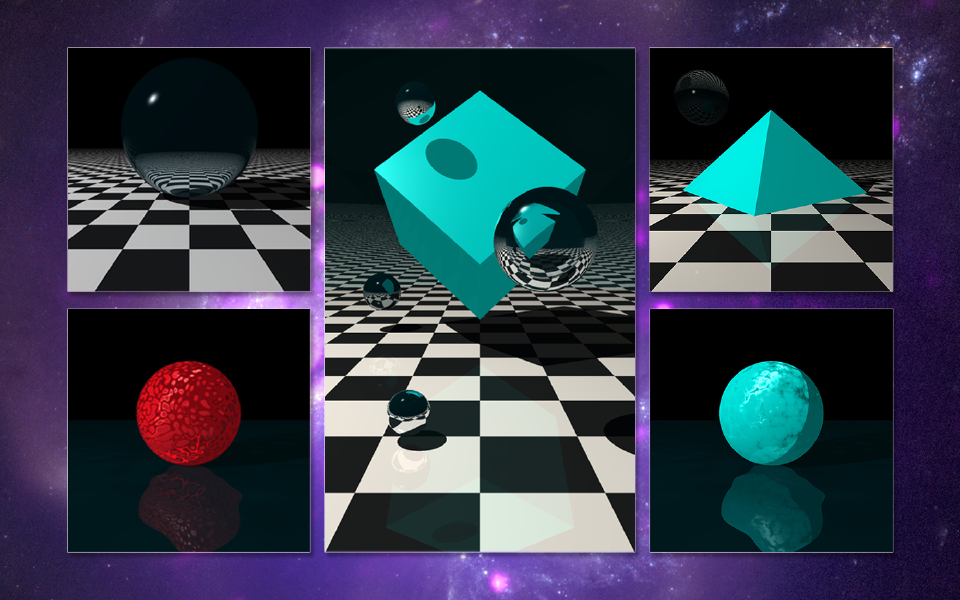Features

The current featureset includes
- Software (CPU-bound) rendering (multithreading works but is still in progress)
- Primitive shapes (eg: cubes, spheres, planes, triangles/polygons)
- 3D file import (
.objfiles supported) - Compound (grouped) geometry via set operations (unions, intersections, etc.)
- Generative textures via surface normal perturbation (using Simplex/Perlin Noise)
- A “from scratch” Matrix and vector maths library
- Material properties including RGB colour, transparency, reflection, refraction, diffusion, etc.
- Unit testing with GoogleTest
References

Ray Painter began as my attempt at the Raytracer Challenge by Jamis Buck. This is one of the most fun programming texts I’ve worked through. The theory is presented, along with a set of language-agnostic test cases, and you are left to implement the application with no other hints from the author. Highly recommend picking up a copy if this stuff interests you!
Source code

The libraytracer source code can be found at my Git repository.
Example renders

Below are some of my favourite renders that have come out of playing with the library during development.
Advanced surface material properties

A demo scene of advanced surface material properties including transparency, refraction, and reflectivity.

Composite shapes

Using set operations to perform unions and intersections with multiple shapes.

Generative textures

The latest addition is getting surface normal textures working, in order to produce generative textures with Perlin/Simplex noise. The results are pretty cool.

Theory

Raytracing is a 3D graphics technique used to render scenes with realistic looking lighting and other effects which simulate the way 3D objects and lighting behave in the world around us.
It’s not a new technique, having its roots in computing as early as the 1960s. I claim zero responsibility for its invention or innovation! Nevertheless, it’s a very fun way to learn about 3D graphics and to embolden linear algebra programming techniques.
\ Wikipedia says it better than I can
The ray-tracing algorithm builds an image by extending [casting] rays [vectors] into a scene and bouncing them off surfaces and towards sources of light to approximate the color value of pixels (wikipedia)
It turns out that you can do a lot of interesting visual effects with the ray while it travels along its path, and this is the idea of a raytracing renderer!
For more detail

I won’t repeat everything Wikipedia says on the subject so check out the source code for more detail if you haven’t already!
This project writeup will be extended as more features and the GUI are developed!

 Table of Contents
Table of Contents